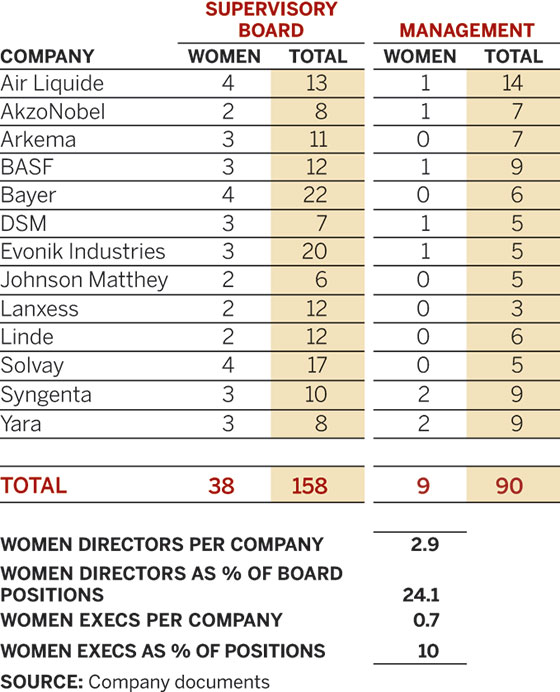Advertisement
Grab your lab coat. Let's get started
Welcome!
Welcome!
Create an account below to get 6 C&EN articles per month, receive newsletters and more - all free.
It seems this is your first time logging in online. Please enter the following information to continue.
As an ACS member you automatically get access to this site. All we need is few more details to create your reading experience.
Not you? Sign in with a different account.
Not you? Sign in with a different account.
ERROR 1
ERROR 1
ERROR 2
ERROR 2
ERROR 2
ERROR 2
ERROR 2
Password and Confirm password must match.
If you have an ACS member number, please enter it here so we can link this account to your membership. (optional)
ERROR 2
ACS values your privacy. By submitting your information, you are gaining access to C&EN and subscribing to our weekly newsletter. We use the information you provide to make your reading experience better, and we will never sell your data to third party members.
Policy
By the Numbers
by Rudy M. Baum
November 15, 2004
| A version of this story appeared in
Volume 82, Issue 46
Each week, C&EN reports on a range of different elements of the chemical enterprise. In many such stories, numbers play a key role in conveying information about the health of the chemical industry, trends in employment, and support of research, to name just three examples.
We take numbers very seriously at C&EN. First, of course, we go to great lengths to ensure that the numbers we report are accurate. We use only reliable sources for the data we report. Reporters and editors pore over stories making certain that the numbers we are reporting match with source material and correspond to each other in tables and text. Furthermore, we are cognizant that how tables are presented on the page greatly affects their usefulness, and we work hard to make sure that tables are "user friendly."
This week's issue is packed with numbers related to the chemical, pharmaceutical, and biotech industries and to academic R&D. Interestingly, the numbers, disparate as they are, paint a uniformly positive portrait of two important elements of the chemical enterprise.
Our cover story, "Facts & Figures of Academic R&D" (see page 37), is by Senior Editor Sophie Rovner, who has been involved in producing this C&EN feature for six years. Data from the National Science Foundation suggest that academic research and development in the U.S. is doing quite well, with total academic R&D spending increasing 10.9% from 2001 to 2002 to reach $36.3 billion. Over the past decade, academic R&D spending increased by an annual average of 6.8%, far outstripping the modest inflation experienced over the same period.
The lion's share of the academic R&D spending--$27 billion in 2002--went for life sciences research. However, Rovner reports that investment in the chemical sector--which accounted for 3.1% of the science and engineering total--grew 11.9% to $1.13 billion in 2002.
We also report in this week's issue on third-quarter earnings by chemical companies (page 14), pharmaceutical companies (page 19), and biotechnology companies (page 22). Senior Correspondent William J. Storck wrote the chemical and biotech earnings stories and Associate Editor Vivien Marx wrote about pharmaceutical earnings.
The brightest earnings reports were, for a change, from the 26 chemical companies C&EN surveys. As Storck writes: "Four quarters of solid earnings growth for chemicals companies: A year-and-a-half ago, who would have thought it? And it has not been just solid growth; it has been close to spectacular." It's been a long time since anyone applied the word "spectacular" to any aspect of the chemical business.
Storck writes that, in the third quarter of 2004, the 26 companies had "earnings of $1.98 billion, a 63.6% increase over the same quarter in 2003. Sales at the firms rose 15.0% to $36.1 billion. The aggregate profit margin for the group improved to 5.5% from 3.9% in the comparable period last year."
Earnings and profit margins at the 13 pharmaceutical companies followed by C&EN dwarf those of the chemical companies, $16.5 billion in earnings and an aggregate profit margin of 21.2% in the third quarter. In the biotech sector, earnings continue to climb, but the gap between the "haves" and "have-nots" in the sector continues to widen.
Important Drugs
Speaking of pharmaceuticals and biotech products, C&EN is planning a special issue in the summer of 2005 that will focus on drugs that have had a profound impact on human welfare, and we would like readers to nominate candidates for inclusion in the issue. We are not limiting the coverage to any particular kind of molecule or when it was discovered--candidates can be natural products, small molecules, peptides, or proteins, and can come from any era. Write me at edit.cen@acs.org.
Thanks for reading.




Join the conversation
Contact the reporter
Submit a Letter to the Editor for publication
Engage with us on Twitter